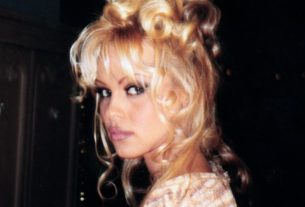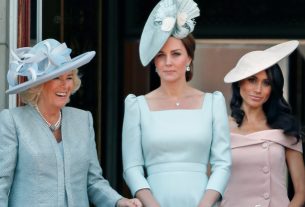Marina Abramović is the doyenne of performance, a living legend whose name has become synonymous with an entire field of art. Doing the impossible, Marina brought the inscrutable world of the post-war European avant-garde to the mainstream via sheer endurance and dedication. Through her remarkable durational performances, she has become a household name and one of the world’s best-known living artists. She has achieved a level of celebrity and recognition known to few pop stars and actors, let alone artists.
This weekend she opens her first solo exhibition in the UK at the Royal Academy in London. Preceding this significant achievement, I spent several afternoons with Marina this summer discussing with her a wide range of topics related to her work, spanning gender and sexuality to pathogens, nationalism, and climate change. What emerged from our conversations was a profile of an artist maintaining a radical understanding of the body and its relationship to art, as well as imagining the unimaginable: a world without Marina Abramović.
I met with Marina on a rainy August afternoon in her Manhattan apartment prior to her departure for the UK. She was recovering from a recent medical procedure and, as expected from an artist whose body has so long been her primary medium, was compelled to speak about the limits and future of human physicality. Affected physical, human experiences–from love to pain–underlie much of Marina’s oeuvre.
She has also shown recent interest in presenting her work in virtual environments. Her recent engagement with work that is both physical and virtual may seem contradictory, but is part of an enduring interest in all that is new and experimental. Rising, a 2019 VR headset-based work, invited users to experience virtual climate change guided by a virtual Abramović avatar. “I was not happy with the result,” said Marina about this experimental piece. The same year she produced The Life, touted as “the world’s first Mixed Reality performance artwork.”
Thirty-two video cameras documented a performance by her that was first streamed to visitors at London’s Serpentine Gallery. Viewing a life-like Marina Abramović give a close-proximity, mixed-reality performance begets many questions around her work, including: what is the role of physical presence when its creator is physically absent? Does Marina’s aura transcend her physical presence? Does the artist need to be present?
Marina sees this work as existing in service of her posterity. She explained that “VR presents the opportunity to keep and hold the reality of a person to such an extent that it approaches the possibility of immortality. I believe that VR will be the future of how to see theater, performance, cinema and music in a new way. This material will have much more value once I am not alive anymore.”
At 76 years old, she is very attentive to her legacy and has established and invested in initiatives to preserve and continue it, including the Marina Abramović Institute. The Institute is home to the Marina Abramović Method, “a continuous project joining people in a communal experience to connect with oneself and with each other.” The Institute, through the Method, seeks to impart her research and knowledge around durational performance to younger and emerging artists. “The most important finding in my practice has been long durational work,” At this point she took a moment to refill my water, replacing the muddled lemon in my glass. “In long durational work you can’t pretend, you have to be yourself and you have to be vulnerable to the public.”
One of her most influential durational works–touching upon both vulnerability and identity–is her seminal 1977 performance piece, Imponderabilia. In its initial iteration, Marina and her late creative and romantic partner Ulay stood naked while facing each other in a narrow entrance, forcing visitors to squeeze between both and, in so doing, to choose which of the two to face. As the world’s understanding of gender becomes more expansive, there are potential new avenues for considering the role of this worktoday. “
I have no problem mixing gender in my work,” said Marina. “But Imponderabilia, as presented now in the Royal Academy show, will stick to one male and one female. Since Ulay has now passed, the work will be presented in its original form as it was in 1977.” Sensing a boundary, I pushed a bit further. On many previous occasions Marina has eschewed the label of feminist artist.
But the world has changed significantly in recent years. I asked if she considers herself an advocate for non-normative genders and sexualities. “As I have said many times before, I do not want to be labeled as a feminist artist,” she responded dryly. We were standing on her balcony watching as the rain let up over Lower Manhattan. “The fact that I am female does not mean that my art has to be female too. I firmly believe in art without gender and sexuality.”
As the body is at the center of Marina’s work, I was compelled to ask her how she feels about elective physical interventions. “It’s a quest for freedom. It’s the right to do what one wants to do with the body. At my age, I have to accept the limits. But, the artist Orlan had many cosmetic surgeries to turn her into what she believed was the ultimate beauty standard. It didn’t turn out well. It turned into art. She aimed for the ideal of beauty of the Renaissance and now the implants over her eyes have become uniquely hers.” Later that afternoon, before departing, I asked if she believes in true love. She smiled at me, ever so slightly. “I believe in true love and I believe love is the most important human quality. When we fall in love even without knowing the person it’s transcendent, unconditional and not limited on any scale. It is a very human experience that everyone should know at least once in their lifetime.”
Experiences that reconcile identity, physicality and emotion are at the crux of Marina’s output. Her core practice of durational performance requires endurance facilitated by a deep knowledge of one’s own body and sense of self. Yet, excessive heat, changing seasons, and extreme weather are creating drastic changes in corporeal awareness. This stuck out to me during this year’s erratic, sweltering summer in New York City. I met Marina again several weeks later in the bar of the Mercer Hotel.
The air outside felt oppressive, and it was impossible not to think of bodily endurance in weather like this. Beyond New York City, climate change is having ever more serious impacts, making entire environments uninhabitable, precarious, or dangerous. I asked her: is climate change changing your own relationship with your body, impacting your practice, or threatening your work?
The heavily air conditioned hotel bar and restaurant were rapidly filling up. She closed her eyes briefly and began to speak. “My most important experience in this regard was living for one year with Aboriginals in the South Australian desert when the temperature during the day can reach over 55 degrees celsius and then cools down to 45 degrees during the night.” She seemed to consider my question further. The crowd outside was dispersing, and the sun had set. Marina would have to leave soon; she was sailing to Southampton on the Queen Mary 2 the following day. She glanced outside, and continued. “When you can’t walk because your environment is consumed by a heat wave and you can’t breathe. When you are forced to be still for long periods of time. When your mind becomes still. When your thinking stops. This is where ideas come through the purity of your mind. Relation to nature and the body is vital.”
Speaking with Marina brought to mind questions around the ways in which body movement is mediated and restricted. Mobility and movement have transformed significantly over her lifetime. She built her career on perpetual movement between places as starkly different as the Australian outback and the streets of Amsterdam. But this version of mobility and geographic fluidity has recently been threatened. The specter of COVID and other pathogens looms large, as does the precarious state of politics. I asked Marina is she thinks mobility is a requirement for the creation of art. She hesitated, and began to answer. “We can’t make any kind of generalization about this experience. Some artists declared the era of Covid was the best time they ever had because it made them stay in one place, read books, stay home and create. And of course some of them had the opposite reaction of deep depression and difficult emotions.”
She took a moment and drank from a glass of iced green tea. “During Covid when no one was traveling, I was the most active I’ve ever been. I don’t know why but this is when I started practicing my opera in Munich to an empty audience for two months. I traveled to India alone for an Ayurvedic retreat. It was a time when I was alone in airports all around the world. But it was also the time when the world has never been more together, united by this new threat. I don’t know why but the less mobility Covid demanded the more I wanted to move.”
But human movement isn’t only influenced by pathogens. Geopolitics have, for much of contemporary history, been the biggest producer of nonconsensual movement and circumscribed mobility. Recently, the war in Ukraine has greatly contributed to the largest refugee crisis in Europe since the Second World War.
Asked by Zelensky to be an ambassador of Ukraine
Marina has been closely involved in Ukraine since she built an interactive installation for the Babyn Yar Holocaust Memorial, The Crystal Wall of Crying in 2021. In the past she has described the war in Ukraine as a “repetition of history.” I asked her that, given her early positioning as a supporter of Ukraine, if there are other roles for artists in preventing such repetitions? She responded emphatically. “I was the first artist to support the Ukraine War against Russia and to give my voice. It is definitely a repetition of history. I have been invited by Zelensky to be an ambassador of Ukraine, to help the children affected by rebuilding schools and such. I have also been invited to be a board member of the Babyn Yar organization to continue to protect the memorial. Making the Crystal Wall of Crying was just the first step in dealing with new history and figuring out how to help heal our increasingly divided world.”
I was left with the feeling that, within her artistic practice, there was a persistent theme suggesting that one’s body is the only true human limitation. Freeing one’s body of its physicality makes one limitless. Legacy extends well beyond the physical body, even for an artist like Marina, whose corporeal practice and presence has become synonymous with her work. But the world is constantly pushing back against bodies and their search for transcendence. It makes them sick, it ages them, it refuses their visas and bombs their homes. As we were preparing to depart, I asked her how she reconciles this unfortunate global reality with her utopic practice. She smiled slyly. “
There is no answer to this kind of question. I think true change only comes by changing yourself. By changing yourself you can change thousands and you can change the world. Gandhi was one example in history who made a revolution without dropping a single drop of blood.”
Shai Baitel is an Israeli-born and the Artistic Director of the Modern Art Museum (MAM) Shanghai
This article was first published in Italy’s La Repubblica’s Robinson magazine.



